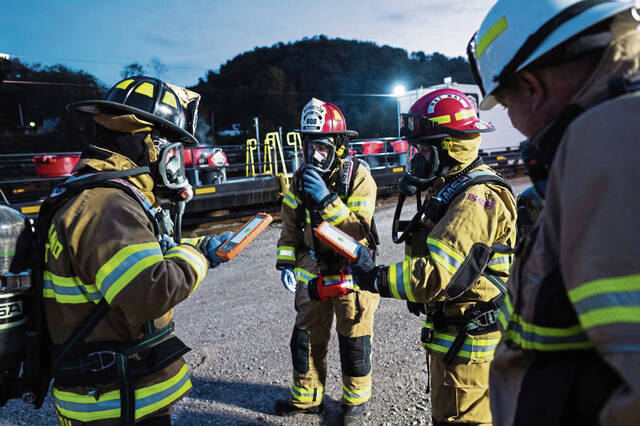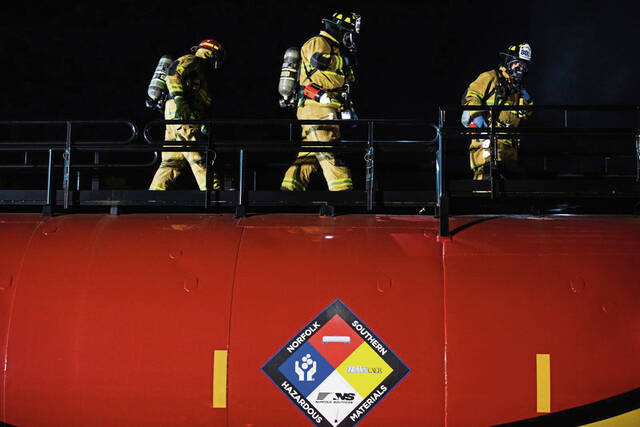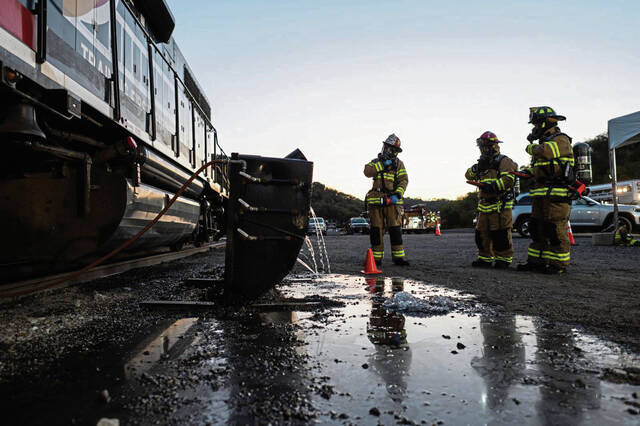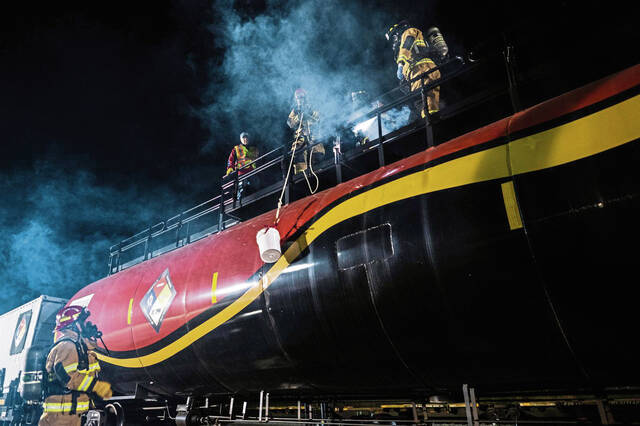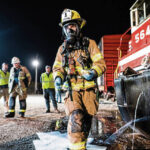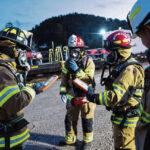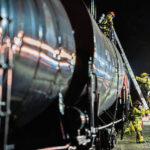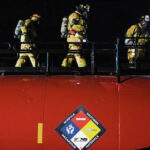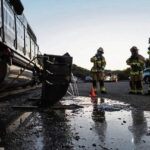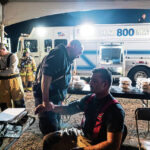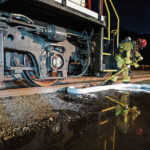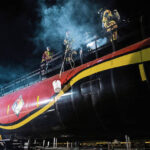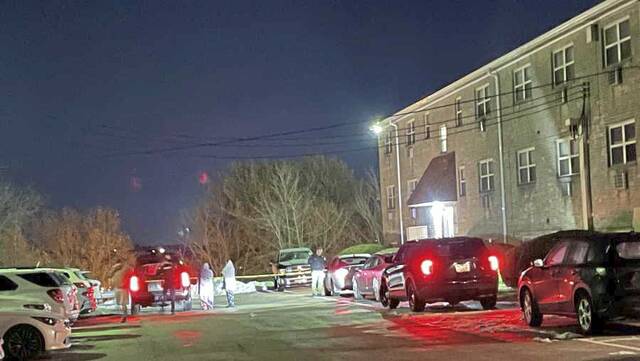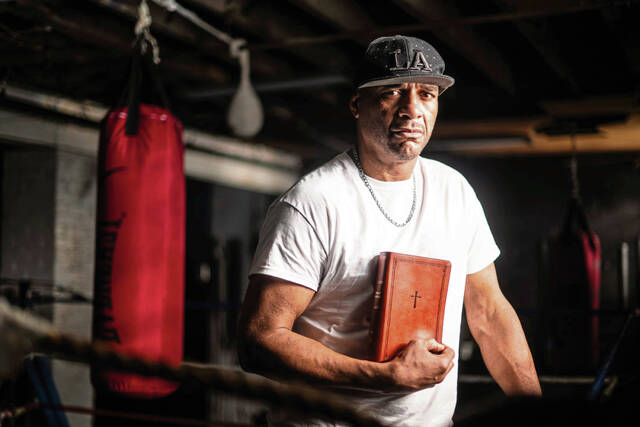More than 100 Westmoreland and Allegheny County first responders spread across the Norfolk Southern train yard in North Versailles for a safety training Wednesday night.
Members of the counties’ emergency response and hazmat units, wearing neon vests and jackets, surrounded Norfolk Southern’s “safety train,” a nine-part train used to simulate hazardous leaks or spills.
The safety train — consisting of a locomotive, two box car classrooms, four tank cars and two flat cars — was created in 2016 as part of the company’s Operation Awareness and Response program. It travels across Norfolk Southern’s 22-state network, which covers nearly 20,000 miles.
The train makes about 12 to 15 stops per year, working with about 5,000 people on average.
The program has seen a “renewed interest” in the past few months because of a derailment that occurred in February in Ohio near the Pennsylvania border, said Connor Spielmaker, Norfolk Southern’s senior communications manager.
This year, about 1,000 first responders attended the safety train events in Ohio alone, Spielmaker said.
About 40 cars from a Norfolk Southern train derailed Feb. 3 in East Palestine, Ohio, about 50 miles from Pittsburgh. Authorities ignited vinyl chloride stored in five of the train cars to prevent an explosion, causing about half of the town’s population to evacuate for several days.
There have been about two or three significant train derailments in the area over the past decade, said Matthew Brown, chief of the Allegheny County Emergency Services unit.
“This isn’t new. Railroads have been around a long time,” Brown said. “There’s a way for us to coexist (with the railroad companies), and we need to be mindful and respectful of the hazards.”
About 20 train cars derailed in Harmar in May, causing three hospitalizations. Traffic along Freeport Road and the Allegheny River was diverted for several days.
A significant derailment also occurred in Pittsburgh’s South Side in August 2018. A pair of shipping containers spilled their contents onto the tracks — including mouthwash, dog and cat food, baby diapers, home appliances and laundry detergent. The incident temporarily clogged Norfolk Southern’s freight routes.
Teamwork is essential in addressing these derailments, Brown said.
“For (Allegheny and Westmoreland), there’s not much of a county line,” Brown said. “We know that it exists, but our public safety entities cross that line literally every hour of every day.”
The counties worked together during the training, which simulated Westmoreland first responders calling Allegheny responders for help addressing four different staged hazardous leaks: a flammable liquid, an acid spill, a toxic inhalation and an unknown substance.
“(Our teamwork) is not unlike what you saw play out in Ohio where you had an incident that was in Ohio, but it was literally just across the state line, so there were impacts that were going to be felt on the Pennsylvania side,” Brown said. “And, in the same way, there were plenty of resources that could be shared and brought there on the Pennsylvania side to help Ohio as well.”
The responders were split into groups, taking turns assessing the leaks before working together to determine the necessary tactics to address each one.
“It’s probably the most dangerous part, because we have to monitor the air for any explosive atmospheres and we also have to consider if there’s toxic inhalation or substances that could travel beyond the site,” Westmoreland County Hazmat Chief Chris Tantlinger said. “We need to consider widespread air monitoring.”
Both counties’ emergency response units complete monthly safety training and quadrennial recertification done through the state Department of Health, Department of Environmental Protection and the state fire commission.
But the safety train provides a realistic, hands-on learning experience, Tantlinger said.
“Specialized equipment is very expensive, and Norfolk Southern makes that available to us all together in one place, and we can work on all of those different scenarios,” Tantlinger said. “We would only do single scenario-type events in our own training centers.
“To actually walk over the rails and through the railcars and on top of the railcars — even though we have those in our training centers — this is actually a couple trainings all in one place.”
Collaborative training allows first responders to attack incidents head-on, without hesitation, Tantlinger said.
“It’s like a football team has a playbook and here’s the plays. And when it comes to game time, we don’t look at the playbook,” Tantlinger said. “We’re ready to react to it like you would on the field.”



